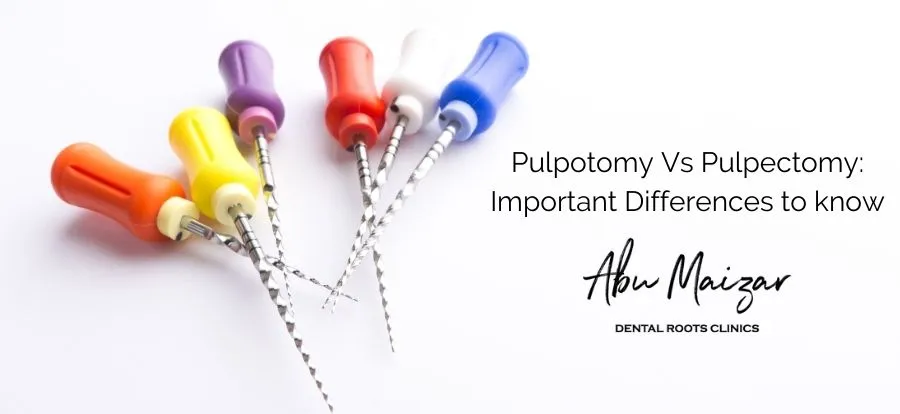How Painful Is Pulpectomy? Find Relief Now

Pulpectomy, a dental procedure that involves the removal of infected or damaged pulp from a tooth, can be a daunting experience for many individuals. The prospect of undergoing a pulpectomy often raises concerns about the level of pain involved. In this article, we will delve into the world of pulpectomy, exploring the procedure, its potential for pain, and most importantly, ways to find relief.
Understanding Pulpectomy
To grasp the concept of pulpectomy and its associated pain, it’s essential to understand what the procedure entails. Pulpectomy is typically performed when a tooth’s pulp, the soft tissue containing nerves, blood vessels, and connective tissue, becomes infected or damaged due to deep decay, cracks, or trauma. This infection can lead to severe pain, and if left untreated, may result in the formation of an abscess or even the death of the tooth.
The pulpectomy procedure involves several steps:
- Anesthesia Administration: To minimize discomfort, local anesthesia is administered to numb the area around the tooth.
- Accessing the Pulp: The dentist or endodontist creates an opening in the tooth to access the pulp chamber.
- Removing the Pulp: The infected or damaged pulp is carefully removed from the tooth, and the chamber is cleaned and disinfected.
- Filling the Tooth: After the pulp is removed, the tooth is filled with a material, usually gutta-percha, to seal the tooth and prevent further infection.
The Pain Factor
The level of pain experienced during a pulpectomy can vary from person to person. Factors influencing pain levels include the extent of the infection, the individual’s pain tolerance, and the effectiveness of the anesthesia. While pulpectomy is generally considered to be less painful than other dental procedures, some discomfort may still be felt.
During the Procedure: Most patients report feeling pressure rather than sharp pain during the pulpectomy, thanks to the numbness provided by the anesthesia. However, some may experience a mild pinching sensation when the anesthesia is administered or when the dentist is working on the tooth.
After the Procedure: Post-procedure pain is often managed with over-the-counter pain relievers. The level of discomfort can range from mild to moderate and usually subsides within a few days. In some cases, patients may experience sensitivity or soreness in the tooth and surrounding gums, which can be alleviated with pain medication and good oral hygiene practices.
Finding Relief
For those undergoing a pulpectomy, it’s reassuring to know that there are several ways to manage and minimize pain:
- Anesthesia: The use of effective local anesthesia is key to reducing pain during the procedure.
- Pain Medication: Over-the-counter pain relievers such as ibuprofen or acetaminophen can help manage post-procedure discomfort.
- Cold Compress: Applying a cold compress to the cheek near the affected tooth can help reduce swelling and ease pain.
- Soft Diet: Eating soft foods for a few days after the procedure can help minimize discomfort and prevent irritation to the tooth and surrounding tissues.
- Good Oral Hygiene: Maintaining good oral hygiene practices, such as gentle brushing and flossing, can help prevent infection and promote healing.
Conclusion
While the prospect of undergoing a pulpectomy may seem intimidating, understanding the procedure and the measures in place to minimize pain can provide significant relief. By discussing concerns and pain management options with a dentist or endodontist, individuals can approach the procedure with confidence, knowing that they are taking a significant step towards restoring their oral health and alleviating pain.
FAQ Section
How long does a pulpectomy procedure take?
+The duration of a pulpectomy can vary depending on the complexity of the case and the number of teeth being treated. On average, the procedure can take anywhere from 30 minutes to several hours, spread over one or more appointments.
Is pulpectomy the same as a root canal?
+Pulpectomy and root canal therapy are often used interchangeably, but technically, pulpectomy refers to the removal of the pulp, which is a part of the root canal procedure. A root canal involves pulpectomy, cleaning and shaping the root canal, and then filling it to prevent further infection.
How much does a pulpectomy cost?
+The cost of a pulpectomy can vary significantly based on factors such as the location, the dentist's or endodontist's fees, the complexity of the procedure, and whether the tooth requires a crown after the procedure. On average, the cost can range from a few hundred to several thousand dollars.
In conclusion, while pulpectomy is a significant dental procedure, advancements in dental technology and pain management have made it more comfortable and accessible. By understanding the procedure and discussing any concerns with a dental professional, individuals can find relief from the pain and discomfort associated with infected teeth, restoring their oral health and well-being.
